Antique scissors marry functionality with impressive design, making these historical pieces highly collectible. Unfortunately, while seasoned collectors may know how to identify and value antique scissors, beginning collectors often find this task too complicated.
When valuing antique scissors, these pieces can be as cheap as $50, while some can cost as much as $2,500+. The big question, however, is what factors affect antique scissors’ value. Also, how do you separate valuable antique scissors from non-valuable ones?
This detailed guide will focus on answering these questions. If you plan to add a pair of antique scissors to your collection, we will help you choose the right scissors and pay the right amount. If you have an old pair of scissors in your cabinet or drawer, this guide will help you get the right amount of money from selling them.
Table of Contents
Identifying Antique Scissors: 5 Things to Consider
1. Consider manufacture Period
While Leonardo Da Vinci is often considered the man who invented scissors because he used a scissor-like device for cutting canvas, historical evidence shows that scissors predate Leonardo by nearly 3,000 years.
1500 BC: The Egyptian Scissors Design
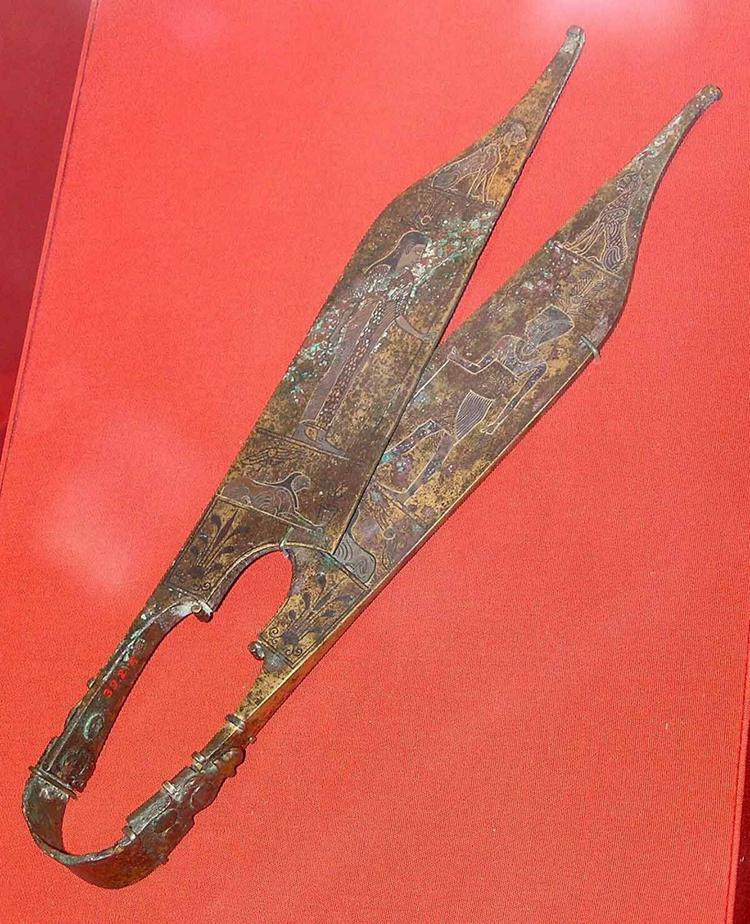
Evidence exists showing that Egyptians started using scissors in 1500 BC. The Egyptians utilized a device manufactured with bronze featuring two blades and controlled using a metal strip that ensured these blades stayed apart when squeezed.
100 AD: Roman Antique Scissor Design
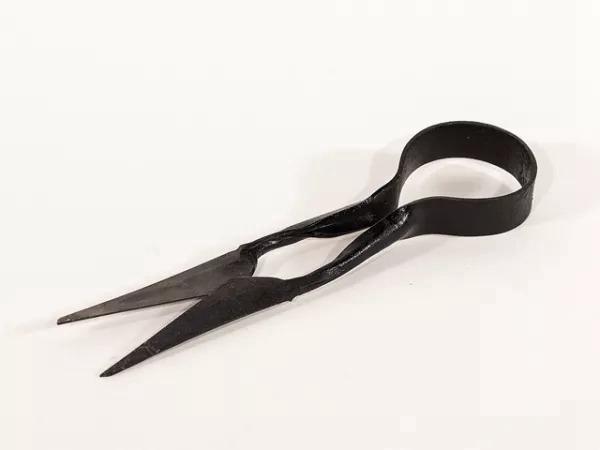
By 100 AD, the Egyptian scissors design had already reached Rome. The Romans changed the Egyptian design, creating cross-blade scissors boasting a style closer to what we use today. The Roman scissors were manufactured mainly using bronze, although iron was sometimes used.
Middle Ages and Renaissance Antique Scissors Design
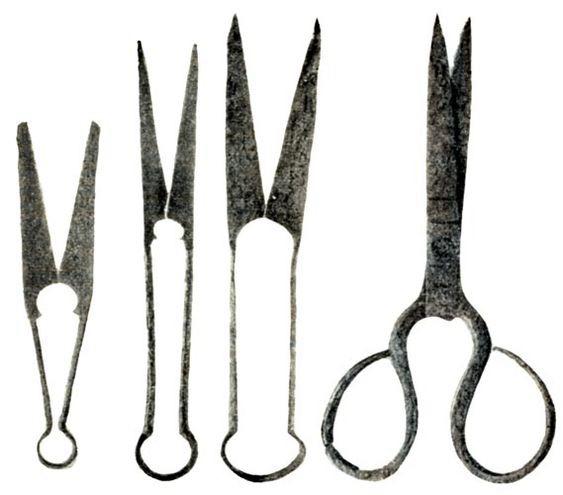
The first spring scissors were created during these two eras. The scissor manufacturers from this period would heat a metal bar and bend it into a tempered curve.
Scissors from this period boasted two sharp blades that remained connected on one end. To use the scissors, one would need to squeeze them together to perform a cutting action. The sharp blade would open when the individual stopped squeezing them.
18th Century: Mass Production Era
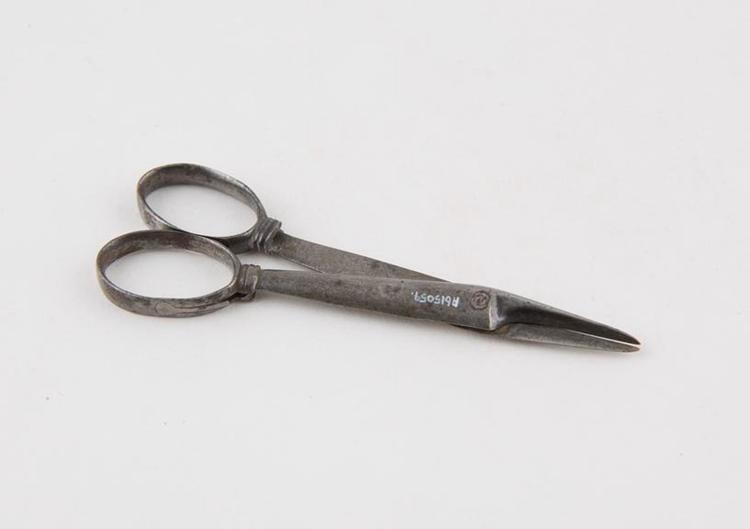
The industrial era started in the 18th Century, making it possible for manufacturers to produce vast quantities of scissors. Robert Hinchliffe—from London—created the first design of modern-day scissors.
Robert’s scissors were pivoted, with the blades being connected at a point between their handles and tips. This scissor design was reportedly used in Japan, Korea, China, and Rome before Hinchliffe popularized it in Europe.
2. Understand the Antique Scissor Manufacturers
During the 19th Century, scissor manufacturers increased, with hundreds of thousands of scissors being produced in the United States and Europe. However, knowing some of the most popular scissors manufacturers can help you identify antique scissors.
England
In England, most companies producing scissors had their base of operation in Sheffield. This was primarily because of the high-quality steel available in this region.
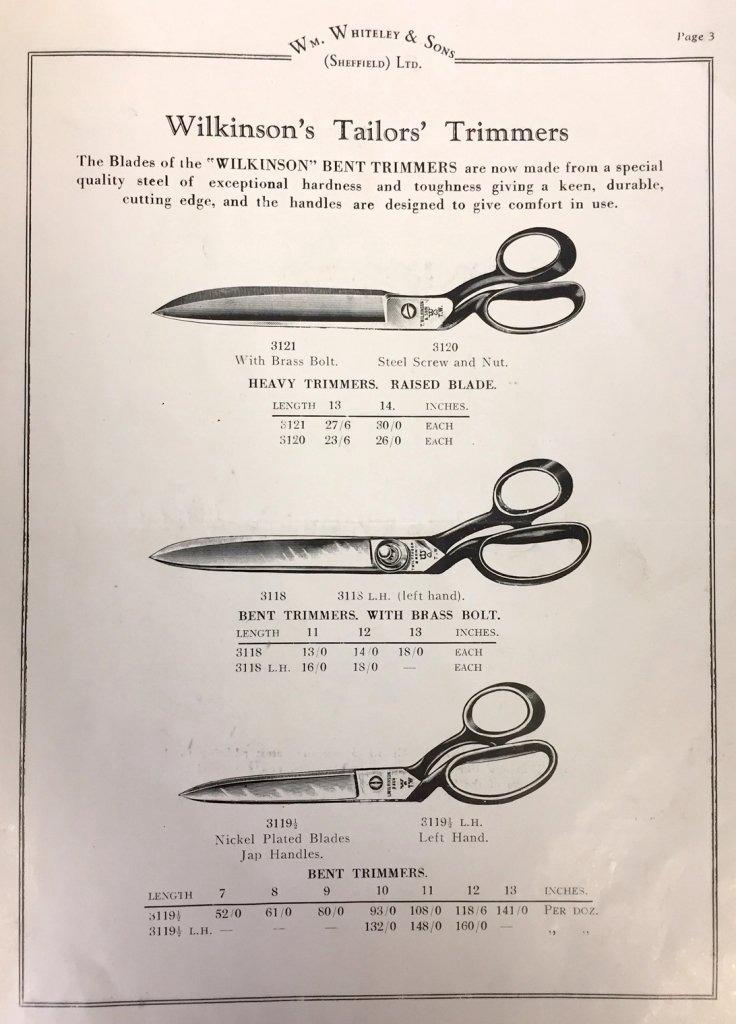
Established in 1760, William Whiteley & Sons produced scissors for people at all economic levels, including the Royal Family. This company patented its impressive “side bent” scissors, which became the blueprint for dressmaking shears.
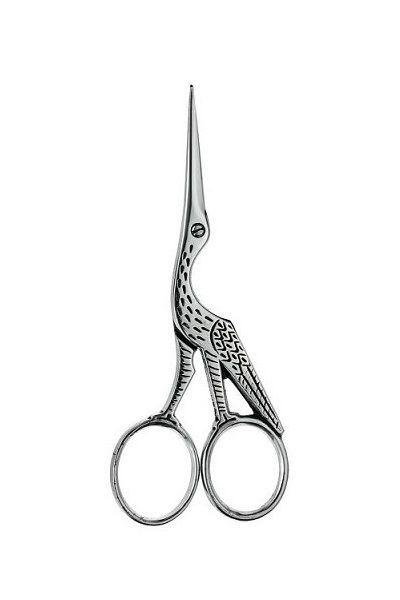
Ernest Wright is another company in Sheffield that was focused on producing scissors. The company was established in 1902 and is still in business today. Ernest Wright is known for its handmade scissors.
Germany
Most of the scissors produced in German came from a region known as Solingen.

The Witte Group—established in 1792—was one of the companies in Solingen known for its scissors. The company was established by Daniel Peres as a cutlery manufacturer, with its product catalog growing to include scissors. The company runs today and is still producing scissors.
The Scissor manufacturers based in Solingen were known to import steel from Sheffield. This continued until the second world war started.
Finland

Fiskars started operation in 1649 and is one of the Nordic countries most ancient scissor manufacturers. The company, however, did not begin producing scissors until 1832.
Fiskars is still in operation today. Its products are known for their impressive quality and durability.
The United States
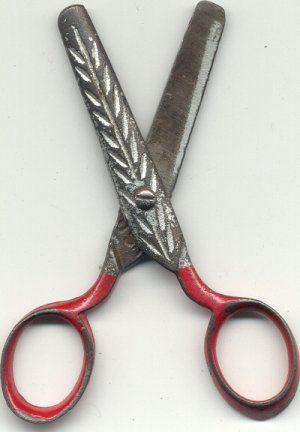
In the US, more than 100 companies produced scissors from the 1850s to the 1930s. However, the most prominent manufacturers were located in the following regions:
- Naugatuck Valley. Lenox Sheer Company was based in this location, with most employees coming from Sheffield.
- Newark. This location was home to German immigrants, and scissors were produced by Wiss & Heinisch Scissors.
- Fremont– Clause Shear and Henkel companies started in Fremont. The two companies merged to become one of the biggest scissors producers in the world.
3. Understand the Different Types of Scissors
Antique scissors are available in a variety of designs. Some of the most common types include;
Buttonhole Scissors
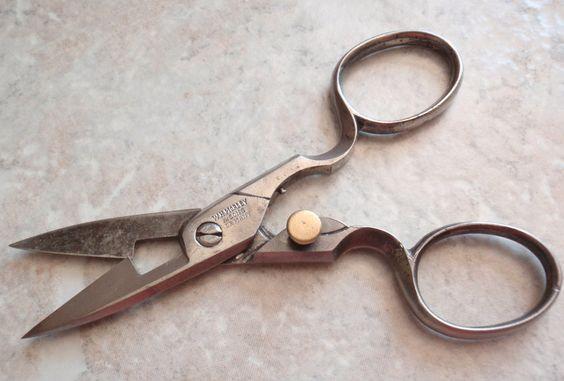
These are small and two-handed scissors boasting a short blade. Tailors often used them to cut buttonholes.
Conventional Scissors
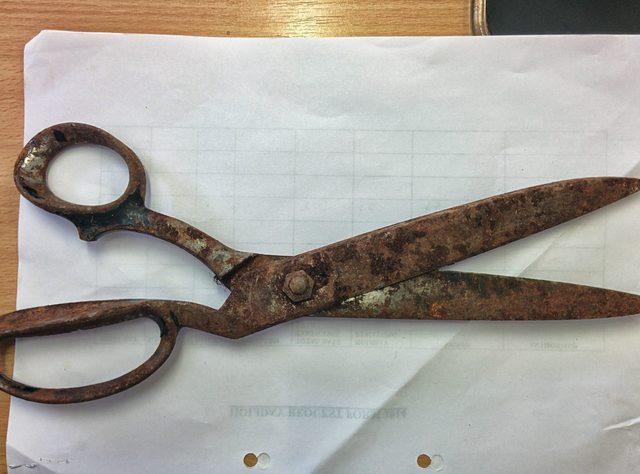
This type of scissors boasts two large hands. It was generally used for most types of scissor jobs.
Embroidery Scissors
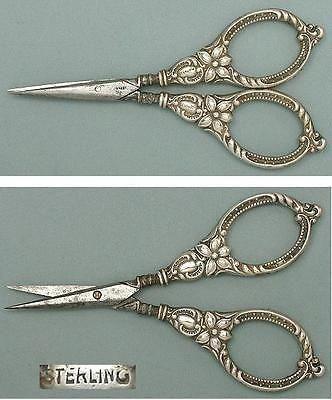
These are small scissors boasting two hands and featuring scalloped blades.
Hair-Cutting Scissors
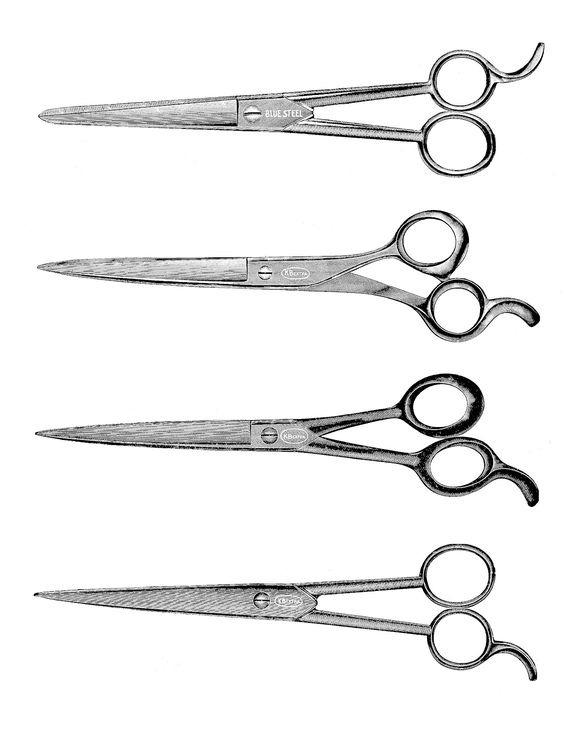
These medium-sized scissors are two-handed and have long, thin blades.
Pinking Shears
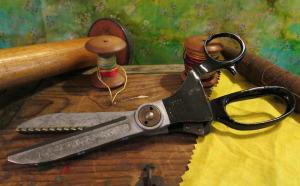
These are large, 2-handed shears with scalloped blades.
Sewing/Tailoring Scissors
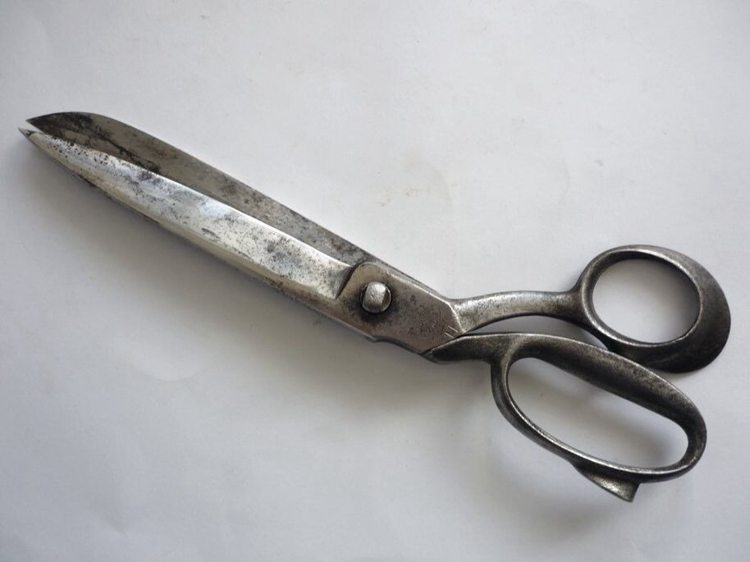
These scissors feature a flat edge. They have two large handles that would sometimes include units of measurement.
4. Consider the Manufacture Materials
While some antique scissors may have the manufacturer’s marks, most do not have the marker’s marks—this makes identifying the scissors quite challenging.
In cases where you cannot find the marker’s marks, we advise you to use the weight and materials to identify your pair of antique scissors. Antique scissors were heavier than modern scissors because most of them were produced using steel. Vintage and contemporary scissors use lighter materials—like aluminum and steel.
In addition to steel, antique scissors also used brass, gold, and silver as their manufacturing materials.
5. Use Online Resources
If you have considered all the tips outlined above and have yet to identify your antique scissors, you may want to take advantage of online resources. Antiquers is an excellent place to start—you can post an image on the platform, and members can help you identify, and even date the antique scissors.
How to Determine the Value of Antique Scissors
On average, antique scissors will cost between $50 and $1,000. However, the value can also go as high as $2,000+.
Some of the factors that influence the value of antique scissors include:
Age
The older an antique scissors, the longer its history—for this simple reason, the antique piece will tend to be more valuable. In most cases, antique scissors from the 18th Century will have a higher value than antique pieces from the late 19th Century.
Condition
Antique collectors have a preference for scissors in the best shape possible. In addition, they prefer antique scissors in good working condition.
Therefore, antique scissors with broken springs, rust stains, and other forms of damage tend to have a lower value.
Materials
As noted earlier, the materials used to produce antique scissors included steel, silver, gold, and brass. Gold and silver are more valuable compared to brass and steel. For this reason, antique scissors manufactured with gold or silver will tend to be costlier than those manufactured with brass and steel.
Decoration
Some manufacturers would use unique stones to decorate their scissors. Moreover, some of these scissors were intricately curved to make them stand out from the crowd of scissors produced during industrialization.
If you come across a decorated piece that boasts rare stones, it will have a much higher value than regular scissors.
Provenance
William Whiteley & Sons company was known to produce scissors for the Royal Family as early as the second half of the 18th Century. Antique scissors by the company and owned by a known member of the Royal Family will be costlier compared to a similar piece that does not have an exciting history.
Rarity
During the industrialization era, hundreds of thousands of scissors were produced yearly. This means that there are numerous pieces to go around. However, some customized pieces were still made during this period.
The customized pieces are generally rarer—these were usually shaped into particular motifs, including unique animal shapes. This often makes them costlier.
Also, it is worth noting that mass-produced pieces that take the same look as thousands of others are valued lower compared to handmade pieces.
Demand
Demand has always influenced the cost of commodities, which also applies to antique scissors. The pieces with high demand will always have a higher price than those with lower demand. The demand, however, often goes hand in hand with rarity—the rarer the piece, the higher the demand.
10 Most Valuable Antique Scissors
S/No |
Name |
Year/Period |
Price (USD) |
1. |
Ottoman Calligraphy Scissors |
1850 to 1899 |
$2,700 |
2. |
Tiffany & Co. Gold Scissors |
Late 19th Century |
$2,000 |
3. |
Hand Forged Scissors |
1887 |
$1,850 |
4. |
Ottoman Turkish Gold Damascened Calligraphers Scissors |
Late 19th Century |
$1,700 |
5. |
Arabic Islamic Gold Processing Scissors |
1800 to 1849 |
$1,650 |
6. |
Georg Jensen Sterling Silver Grape Scissors |
The 1900s |
$1,476 |
7. |
Italian Dagger-Scissors |
Early 19th Century |
$1,350 |
8. |
Evald Nielsen No. 6 Scissors |
Early 20th Century |
$1,066 |
9. |
14 cm Islamic Scissors |
1800 to 1849 |
$895 |
10. |
Grape Leaves Decorated Brass Scissors |
18th Century |
$880 |
1. Ottoman Calligraphy Scissors
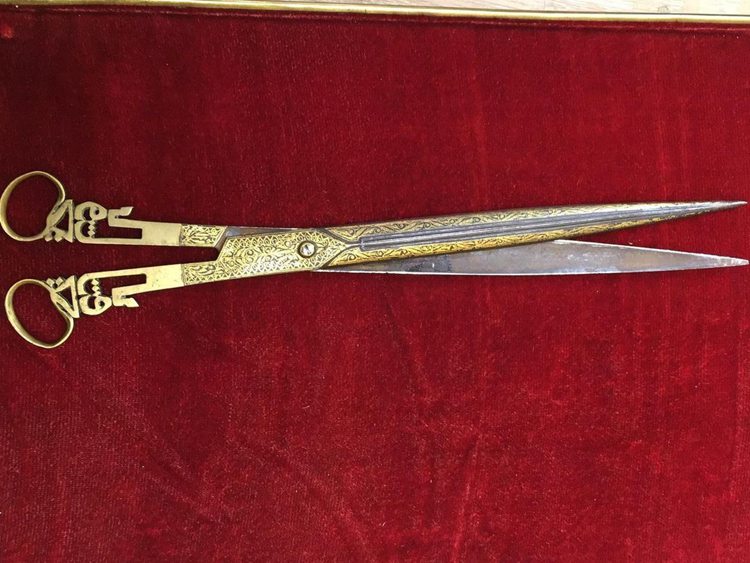
Manufactured in the Middle East Region, these Ottoman Calligraphy Scissors have been around for more than a Century. According to the seller, these scissors came out between 1850 and 1899.
The scissors are 26.5 cm long and boast iron as their primary material. The seller, however, notes that the scissors have been gold-plated. Boasting Ya Fettah writing, these antique scissors are listed on eBay for $2,700.
2. Tiffany & Co. Gold Scissors
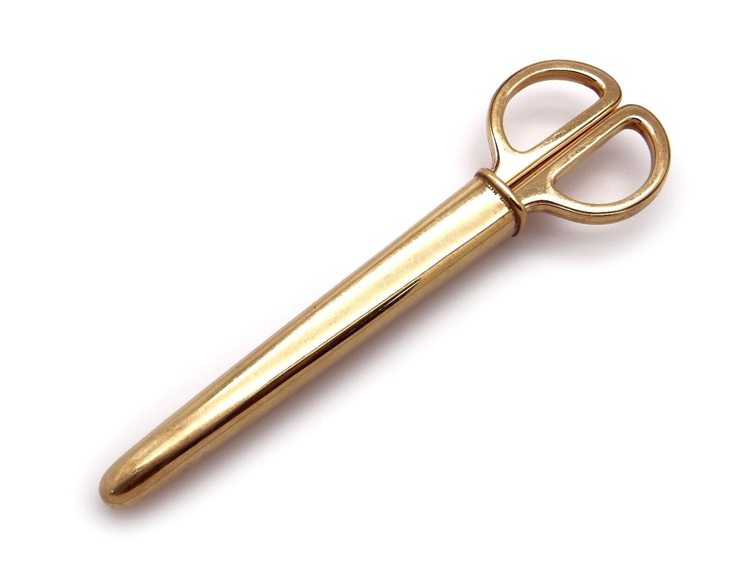
This pair of scissors was produced by Tiffany & Co. in the late 19th Century with yellow gold as the primary material. Identified as styling scissors, the Tiffany & Co. Gold Scissors come in their gold sleeve.
The seller notes that the pair of scissors is perfect for hair styling and have a total length of 4.75 inches. Currently listed on eBay, these scissors have a price tag of $2,000. Interestingly, the pair of scissors has already caught the interest of 12 people.
3. Hand Forged Scissors
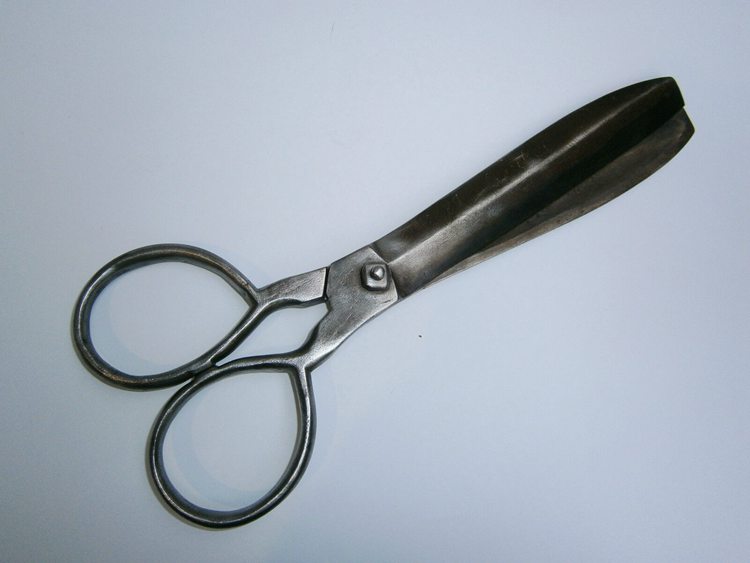
This pair of scissors is believed to have been manufactured in 1887. According to the seller, the scissors boast impressive provenance and have been owned by Hristo Hitove, the brother of a Bulgarian revolutionary known as Panayot Hitov.
The hand-forged scissors are still in good shape, showing only minor wear. Currently listed on eBay, this pair sells at $1,850.
4. Ottoman Turkish Gold Damascened Calligraphers Scissors
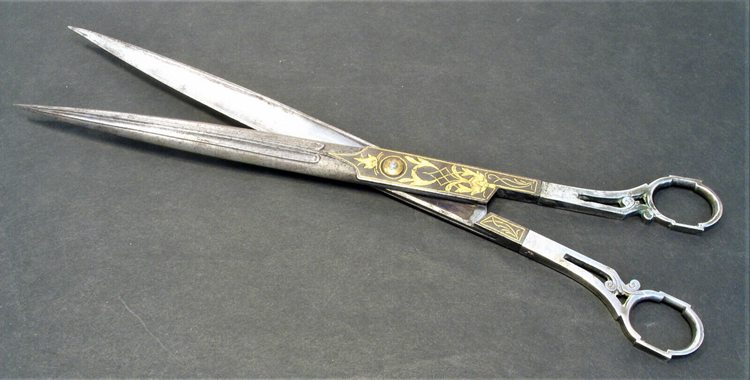
This antique piece dates back to the second half of the 19th Century (1850 to 1899). Originating from the Middle East, the antique scissors boast iron and silver as their primary materials and have a gold in-lay.
The seller notes that the scissors have a length of 10 inches and are still in good condition. The antique scissors are selling for $1,700 on eBay.
5. Arabic Islamic Gold Processing Scissors
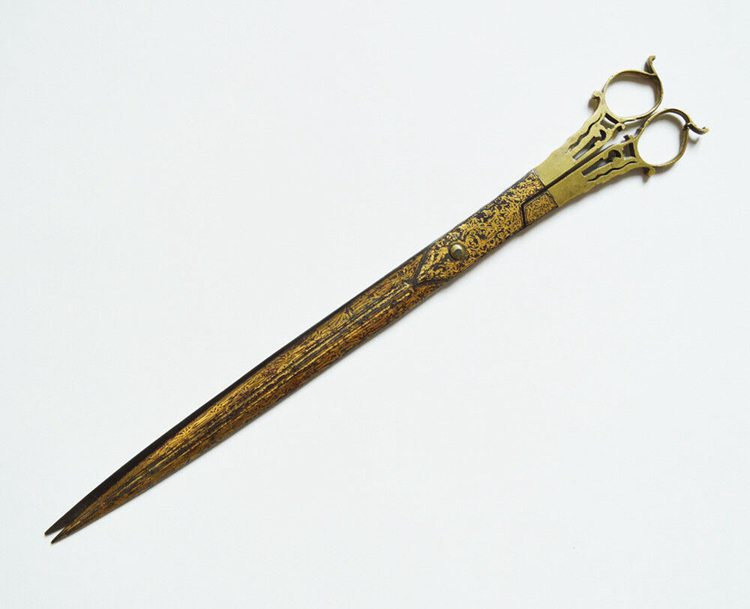
Another piece from Turkey, this antique pair of scissors, was produced between 1800 and 1849. One of the oldest pieces on this list, the antique pair, has been used for nearly 200 years.
The gold-colored pair is layered with a scribe and decorated with leaves and flowers common in the 19th Century Turkey. The antique scissors have a length of 24 centimeters and are currently on sale for $1,650.
6. Georg Jensen Sterling Silver Grape Scissors
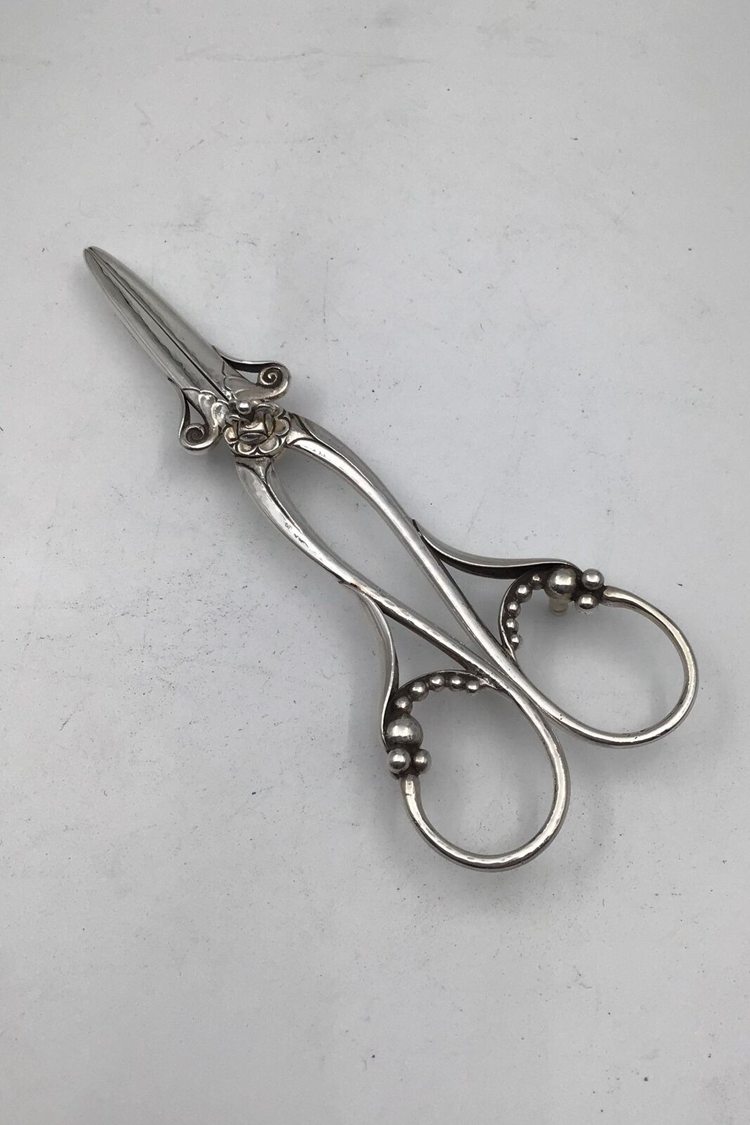
This pair of antique scissors was produced in the early 20th Century. Boasting an ornamental design, the pair has a length of 5.82 inches and has its origin in Scandinavia.
According to the seller, the pair is in excellent condition and does not show any damage. Still, in good working condition, this piece is selling at $1,476.
7. Italian Dagger-Scissors
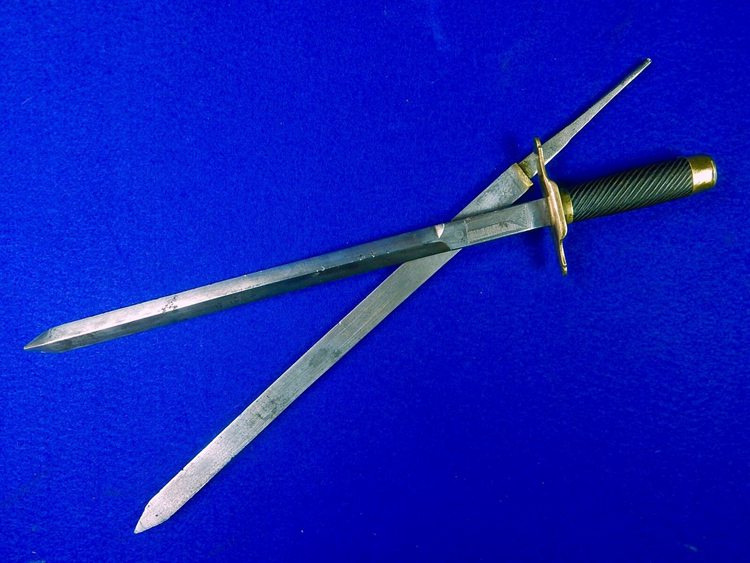
This piece from the 19th Century plays two roles—it is both an antique dagger and pair of scissors. The piece boasts two daggers that have been connected to enable their use as a pair of scissors.
The antique piece has a total length of 18.75 inches, with blades measuring 14.5 inches. The seller notes that the only issue the pair of dagger-scissors have is that one of the blades does not have a handle. This pair is selling at $1,350.
8. Evald Nielsen No. 6 Scissors
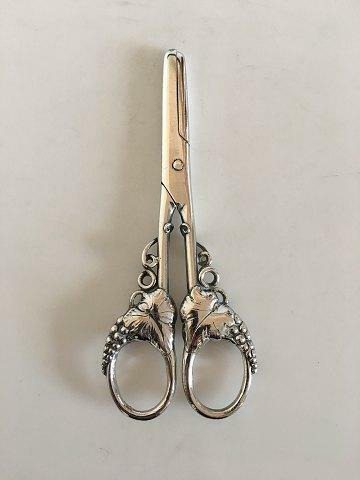
This pair of antique scissors was produced in the early 19th Century. According to the seller, this piece is from the Evald Nielsen brand and boasts pattern No. 6.
The antique decorative scissors boast a total length of 15 cm. The seller notes that the whole of this length does not show much wear and tear, and the piece is still in excellent condition. Currently listed on eBay, this pair of antique scissors is selling for $1,066.
9. 14 cm Islamic Scissors
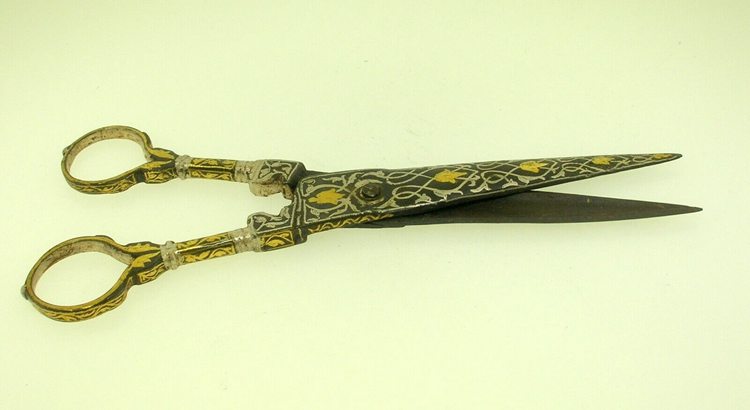
If you have been hunting for antique scissors under $1,000, you are in luck. This piece from the middle east dates back to the first half of the 19th Century and sells at $895. According to the seller, a similar piece exists in a British museum—this verifies the manufacturing period for this pair of antique scissors.
The piece has a length of 14.6 cm and was manufactured with steel as its primary material. Currently listed on eBay, this pair is still in excellent condition—it is reportedly working and does not show any damage. When we checked the listing for this antique pair of scissors, we noticed that it had already attracted the interest of 6 buyers.
10. Grape Leaves Decorated Brass Scissors
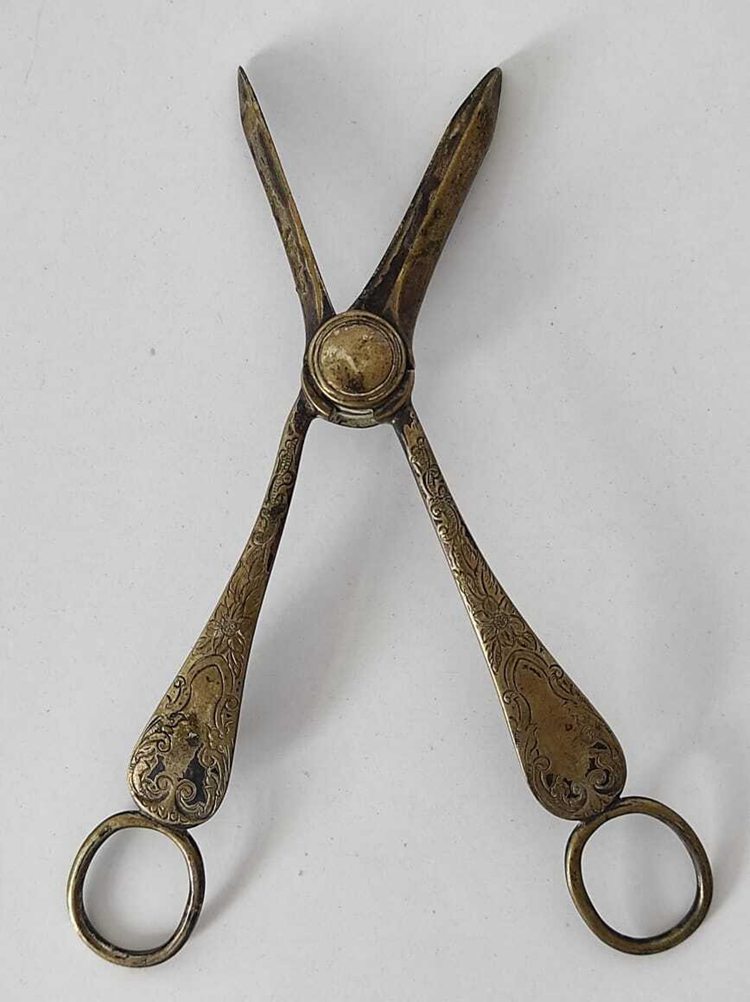
One of the oldest antique pairs of scissors we have on this list—this piece dates back to the 18th Century. The piece was handmade using brass—history shows that brass was the material used in the earliest days of scissors production.
The seller notes that the pair of scissors is unbranded, which makes it hard to tell the manufacturer. However, the piece boasts the shape of grape leaves, which makes it unique from all the other pieces on this list. Currently listed on eBay, you can add the Grape Leaves Decorated Brass Scissors to your collection after paying a price of $880.
Overview
With their history going back to 1500 BC in Egypt, these handy tools have evolved over the years to be what they are today. One of the most popular collectibles, antique scissors come in various designs that make them stand out.
While it is possible to get an antique pair of scissors for less than $50, it is also worth noting that the best—and rarest—pieces are more expensive—these can cost you thousands of dollars. This guide takes a deeper look at antique scissors, how to identify them, and their overall value. Whether you are buying a piece to add to your collection or your goal is to sell, the tips outlined in the article should help you spend—or get paid—the right amount of money.
We hope we have answered your questions about collecting and selling antique scissors. However, if there is something we have missed, be sure to let us know in the comment section—we will respond with the correct answer as soon as possible.





![Where To Sell Antique Furniture In 2022 [Ultimate Guide]](https://www.jacquelinestallone.com/wp-content/uploads/2022/09/Etsy-Your-Place-To-Buy-And-Sell-All-Things-Handmade-600x450.jpg)


